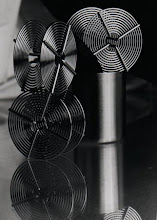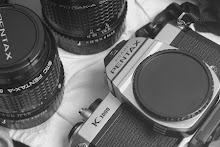Anyone who’s used one for a few moments should be familiar with their basic setup and use. Meanwhile, it becomes obvious after a few years that the real, proficient use of tripods in the field and in the studio is more than just adjusting the working height or tightening the pan/tilt knob.
Perhaps one of the easiest ways people mess up with using the tripod is to begin by placing it incorrectly. What can happen is that the photographer gets on the scene, looks around, begins to visualize some photos; then, just being in the general area, he sets up the tripod. Then, he puts the camera on the tripod, wherever it was setup, without thinking much about where the camera now is.
Tripod use goes much more smoothly when we think about using the tripod to put the camera where it needs to be. The tripod exists to steadily support the camera in a specific location in three dimensional space, on the scene of the camera’s view of the picture’s composition. One way to take this approach is to begin visualizing some shots, with the camera or viewing card, and then noting where in space the camera needs to be. Usually, I find myself saying to myself, Right here, while pointing to the ground. This is a note to me where the central position of the camera will be. Then, I look forward and level from where I am, not thinking much about viewing angle. Instead, in that moment, I try to visualize what the world will look like from behind the camera, at the height where I want the camera to be placed, as I look toward the subject. Using those two mental notes, location on the ground, and appearance of the world before the camera, I can easily take a break for a moment from composing. Then, it’s time to break out the tripod and place it on the scene so that the camera will be suspended in space right where I need it to be.
This method may sound and seem obvious, but let’s compare it to the trap that many of us can fall into. We get on the scene. We look around. We get excited about what we see that we can photograph. We set up “Here”, in the general area of the subject, instead of exactly where we want the camera to be supported in three dimensional space. Then, on composing and taking the picture, we wonder why our handheld shots seem so much better.
With a little practice at evaluation, with some forethought about where we are going to place the tripod relative to the subject, we can refine our tripod positioning and placement so that it should not be obvious to final viewers, or to ourselves later, which shots were handheld and which shots were tripod-based.
Effective tripod use, like lens choice, goes back to visualization. On rocky ground, like when photographing within rocky streambeds, and other places where tripod leg setup might be a hassle, I often find myself going back to the viewing card for visualization support. Another method I use is to select the lens I think would be approximately appropriate. Then, after “casing” the area with the lens, pick where in space I want the camera to be. Then, regardless of the terrain underfoot, I try to use the tripod to place the camera exactly where I want it.
It’s a different outlook than approaching the matter as “Set up the tripod.” It’s more like, “Bring the tripod to the camera.” Setup the tripod legs, the column, the attachment plate so that the camera sits in space where you want the camera to be. If instead, you bring the camera to the tripod setup point, you will be confined to whatever compositional decisions the tripod setup made for you. As simple as it sounds, I believe that the difference in these two approaches is one of the differences between ineffective and effective tripod use.
Decide where you want the camera to be. Bring the tripod to the camera. Suspend the camera in space, exactly where you want the camera to be, using a stable tripod setup.
Perhaps one of the easiest ways people mess up with using the tripod is to begin by placing it incorrectly. What can happen is that the photographer gets on the scene, looks around, begins to visualize some photos; then, just being in the general area, he sets up the tripod. Then, he puts the camera on the tripod, wherever it was setup, without thinking much about where the camera now is.
Tripod use goes much more smoothly when we think about using the tripod to put the camera where it needs to be. The tripod exists to steadily support the camera in a specific location in three dimensional space, on the scene of the camera’s view of the picture’s composition. One way to take this approach is to begin visualizing some shots, with the camera or viewing card, and then noting where in space the camera needs to be. Usually, I find myself saying to myself, Right here, while pointing to the ground. This is a note to me where the central position of the camera will be. Then, I look forward and level from where I am, not thinking much about viewing angle. Instead, in that moment, I try to visualize what the world will look like from behind the camera, at the height where I want the camera to be placed, as I look toward the subject. Using those two mental notes, location on the ground, and appearance of the world before the camera, I can easily take a break for a moment from composing. Then, it’s time to break out the tripod and place it on the scene so that the camera will be suspended in space right where I need it to be.
This method may sound and seem obvious, but let’s compare it to the trap that many of us can fall into. We get on the scene. We look around. We get excited about what we see that we can photograph. We set up “Here”, in the general area of the subject, instead of exactly where we want the camera to be supported in three dimensional space. Then, on composing and taking the picture, we wonder why our handheld shots seem so much better.
With a little practice at evaluation, with some forethought about where we are going to place the tripod relative to the subject, we can refine our tripod positioning and placement so that it should not be obvious to final viewers, or to ourselves later, which shots were handheld and which shots were tripod-based.
Effective tripod use, like lens choice, goes back to visualization. On rocky ground, like when photographing within rocky streambeds, and other places where tripod leg setup might be a hassle, I often find myself going back to the viewing card for visualization support. Another method I use is to select the lens I think would be approximately appropriate. Then, after “casing” the area with the lens, pick where in space I want the camera to be. Then, regardless of the terrain underfoot, I try to use the tripod to place the camera exactly where I want it.
It’s a different outlook than approaching the matter as “Set up the tripod.” It’s more like, “Bring the tripod to the camera.” Setup the tripod legs, the column, the attachment plate so that the camera sits in space where you want the camera to be. If instead, you bring the camera to the tripod setup point, you will be confined to whatever compositional decisions the tripod setup made for you. As simple as it sounds, I believe that the difference in these two approaches is one of the differences between ineffective and effective tripod use.
Decide where you want the camera to be. Bring the tripod to the camera. Suspend the camera in space, exactly where you want the camera to be, using a stable tripod setup.
# # #






No comments:
Post a Comment